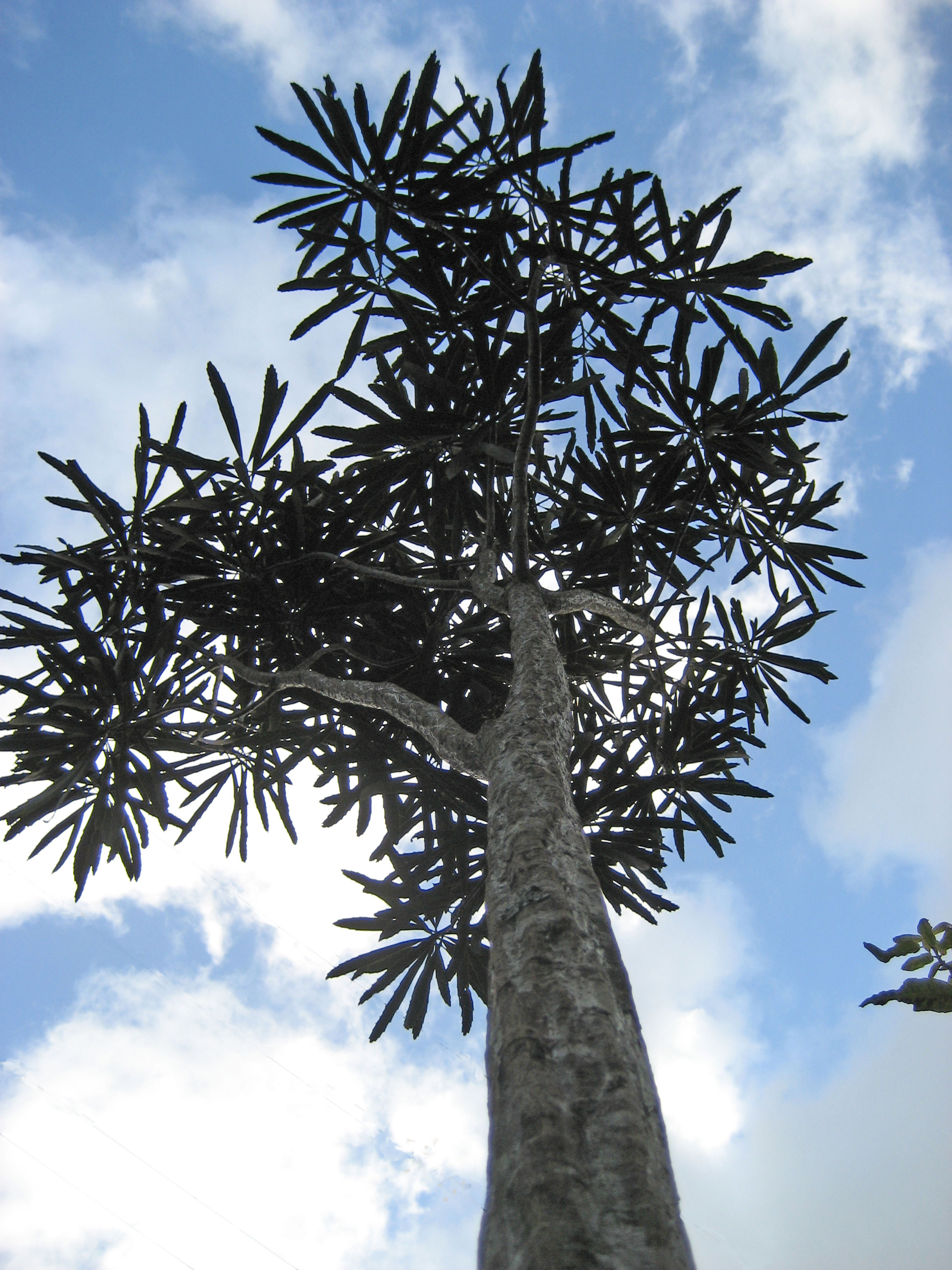- Pseudopanax crassifolius
Taxobox
color = lightgreen
name = Lancewood

image_caption = Adult tree
image_width = 240px
status =secure
regnum =Plant ae
divisio = Magnoliophyta
classis =Magnoliopsida
ordo =Apiales
familia =Araliaceae
genus = "Pseudopanax "
species = "P. crassifolius"
binomial = "Pseudopanax crassifolius"
binomial_authority = (Sol. ex A.Cunn.) C.Kochlong with irregular teeth, all growing downwards from a central stem. The young trunk has characteristic vertical swollen ridges. As the tree gets older the stem begins to branch producing a bushy top, and the leaves become wider and shorter, losing their teeth. It is only when the tree is mature that it adopts its "normal" shape - round-topped, with a straight clean trunk up to 50 cm thick. Maximum height is 15 m.
Closely related is "
Pseudopanax ferox ", the toothed lancewood. It is similar to "P. crassifolius" except the leaves are more abundant and severely toothed, resembling a bandsaw blade.One of the theories about this curious change of appearance is that the young plant had to protect itself against browsing by the
moa , the giant flightless bird that roamed New Zealand's bush in prehistoric times. Once above moa height, it was out of danger and turns into a "regular" tree.In fiction
The New Zealand lancewood is celebrated in fiction in a novel titled Lancewood, written by Alan Marshall and published by Indra Publishers in Australia. A paragraph from Chapter 3 reads:
"A bizarre jagged gem of the forest, the lancewood's distinctive habit splits the soft forest light to stab one in the eye with an odd, unearthly beauty. It's slicing leaves, each blade a blade, gives the plant the demeanor of a strangely elegant weapon."
External links
*"Flora of New Zealand", URL: [http://floraseries.landcareresearch.co.nz/pages/Taxon.aspx?id=_e781ffb2-4b03-4fff-9999-18a8ba0956ce&fileName=Flora%201.xml "Pseudopanax crassifolius"] . Accessed 17 May 2007.
*"New Zealand Plant Conservation Network", URL: [http://www.nzpcn.org.nz/vascular_plants/detail.asp?PlantID=1226 "Pseudopanax crassifolius"] . Accessed 17 May 2007.References
* Salmon J T, "The Native Trees of New Zealand", AH & AW Reed Ltd, Wellington, New Zealand
1973 ISBN 0-589-01340-8
Wikimedia Foundation. 2010.
